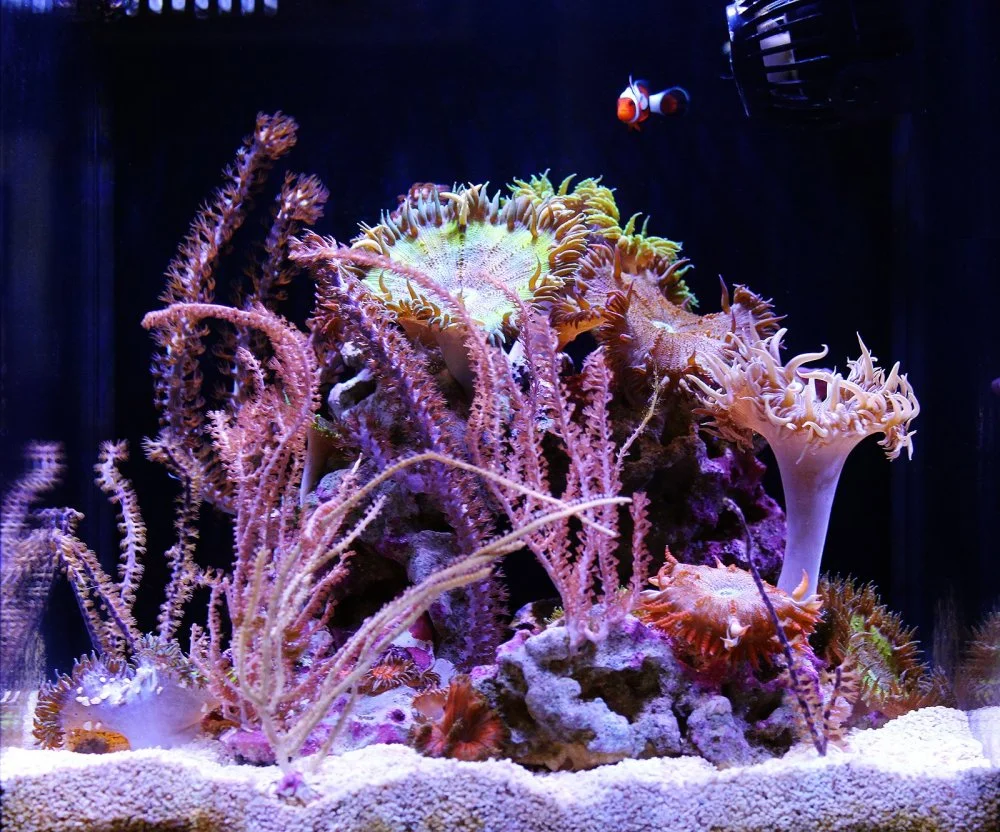Stunning 10-Gallon Reef Tank – kimberbee's TOTM | NanoReef

Tank Specifications
Volume: 10 Gallons / 37 Liters
Dimensions (L × W × H):
12.0" ×
15.0" ×
13.0"
30.5cm ×
38.1cm ×
33.0cm
Equipment List
- Salt: Red Sea
Frequently Asked Questions
What is the recommended water change frequency for a nano reef tank?
It is recommended to perform a 20-25% water change every week. This helps maintain water quality and keeps the tank healthy.
How should I prepare the water for water changes?
Use an RO/DI (Reverse Osmosis/Deionization) unit to produce clean water. Mix with a high-quality salt mix, such as Red Sea Coral Pro, before adding it to the tank.
What should I do if I miss a water change?
If you miss a week of water changes, you can quickly perform a swap out while leaving the sand untouched. The tank may still remain healthy if regular maintenance is otherwise performed.
What equipment is used for filtration and media in this tank?
This nano reef tank uses Chemipure Blue Nano and PolyFil/Filter Floss in an inTank media basket for filtration.
How do I clean algae from the tank?
Use a toothbrush to scrub algae off the back wall of the tank during your water change routine.
How often should I replace the filter media?
The Chemipure packet should be swapped for a new one monthly, while filter floss or polyfil should be changed weekly.
What types of food are fed to the tank's inhabitants?
Feed a variety of foods including frozen spirulina brine, mysis shrimp, bloodworms, Hikari Marine S pellets, and powdered foods such as Reef Roids and Coralific Delight.
How often should I feed my tank?
It's recommended to feed every second or third day to ensure a balanced diet for the inhabitants.
What types of fish and invertebrates are suitable for a nano reef tank?
Suitable fish include Ocellaris Clownfish and Pink Streaked Wrasse. Invertebrates that thrive well are Anemone Shrimp, Pom Pom Crabs, and various gorgonian species.
How can I introduce new livestock to the tank?
Introduce new livestock slowly to avoid overwhelming the bioload. Quarantine new additions beforehand to ensure they are healthy.
What parameters should I check regularly in my reef tank?
Regularly check salinity and temperature. You may test for other parameters if something appears off or if unexplainable losses occur.
Do I need to regularly dose my reef tank?
In this particular setup, dosing is not performed regularly. Monitoring salinity and temperature is key, but dosing may become necessary if specific corals or animals require it.